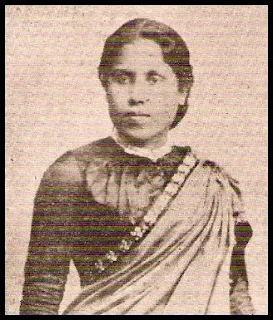Kammani Roy was born on October 12, 1942 in Basanda village, a leading Bengali poet, social worker and feminist in British India. She was the first female honor graduate in British India. After obtaining an Honors Degree from Bethune College in 1886, he received his teaching position from the same college.
He participated in the Elbert Bill movement. It was during this period that would be fruitful for him, as he wrote at this time. He quit studies after 5 years. Here he was exposed for five years. Soon, he would marry Kedarnath Roy at the age of 30, which was against the rules of the time. It was very unusual for girls to get married in the thirties in colonial Bengal.
The story of his life
Kamini belongs to the elite Bengali Vaidya family. His father Chandi Charan Sen, a judge and author, was a leading member of the Brahmo Samaj. He learned from his book collections and used his library extensively. He was a mathematical enthusiast but later his interest shifted to Sanskrit. His brother Nisitchandra Sen was a renowned barrister of the Calcutta High Court and later, while the mayor of Kolkata, Sister Jamini was the home physician of the then Nepal Royal family.
In 1894 he married Kedarnath Roy. Kamini Roy attended Bethune School in the 5th. Among the first girls to study in British India, she graduated with honors in Sanskrit from Bethune College, Calcutta University in 1986, and began studying there that same year. Kadambini Ganguly, one of the country's first two female respected graduates, was three years older than him at the same institution.
Her essay is World Story
His writing is simple and elegant. He published his first light shadow compilation in 3 and two more books after that, but took a break from writing several years after his marriage and motherhood. She was a feminist at an age when it was just forbidden for a woman to study. [Citation needed] She accepted the promise of feminism from Athla Bose, a classmate of Bethune School. Speaking at a girl's school in Kolkata, Roy said that as Bharti Roy later explained, "the goal of women's education was to contribute to their ultimate development and fulfill their potential".
In a Bangla article titled Knowledge Tree Fruit, she wrote that in 121 she was the leader of the Bengali women's society, including Kumudini Mitra (Basu) and Mrinalini Sen, an organization formed to fight for women's suffrage. . The Bengal Legislative Assembly gave women limited voting rights in 1225, allowing Bengali women to exercise their rights for the first time in the 32nd general election. She was a member of the Women's Labor Investigation Commission (122-20)
The desire to rule men is primitive, though not the only one, women are stumbling in the path of enlightenment ... they are extremely skeptical of women's liberation. Why? The same old fear - 'lest they become like us'
Among his significant literary contributions were:
- Mahasweta, Pundorik
- Pouraniki
- The island and the sun
- In life lessons
- Nirmalya
- Malay O Nirmalai
- Ashoka Music
- Resonance (children's book)
- Girl Sikkhar Adarsh (Article)
The personal life of Kamini Roy
He had two children with Kedarnath, after which he retired from the writing profession. Asked why he stopped writing, he said, “My children are my living poem. Kamini returned to writing poetry after her husband's death in 9 and her eldest son.
Roy went out of his way to encourage other writers and poets. In 7, she visited Barisal and encouraged a young girl, Sufia Kamal, to continue writing. He was the president of the Bengali Literary Conference in 5 and vice-president of the Bengali Literary Council in 1-3.
He was influenced by poet Rabindranath Tagore and Sanskrit literature. Kolkata University honored him with Jagatarini Gold Medal.
In his later life, he lived in Hazaribagh for several years. In that small town, he often discussed literary and other topics with scholars like Mahesh Chandra Ghosh and Dhirendranath Chowdhury. He died on 27 September 1933 while in Hazaribagh

G`day! Our company https://expertpaperwriter.com/editage-review/ cover a multitude of academic topics, so you’ll surely get what you need. An authentic study in line with your instructions is guaranteed. Depending on the number of pages and degree of trickiness, our pros can complete your order in 3-6 hours and more.
ReplyDelete